Mastering Brazilian Jiu-Jitsu submissions is critical to grappler success. Submissions mean instant triumph and satisfaction.
Although BJJ proficiency requires timing, these submission techniques will take your game to the next level. So, keep reading to compile a list of effective BJJ submissions!
Triangle Choke

The triangle choke is considered one of the most compelling submissions in Brazilian jiu-jitsu. Numerous competitors have used it to gain an advantage over their opponents in challenging competitions such as BJJ, MMA, and others.
To perform a triangle chokehold, you need to wrap your legs around your opponent’s neck in a triangular shape while simultaneously placing one of their arms in between your legs.
This creates a blood choke that puts immense pressure on the opponent’s neck, cutting off their blood flow and forcing them to submit or lose consciousness.
Otherwise, the triangle chokehold can be achieved from different positions, such as closed guard, full mount, back-control, half guard, side control, and other variations of these positions.
Arm Triangle Choke
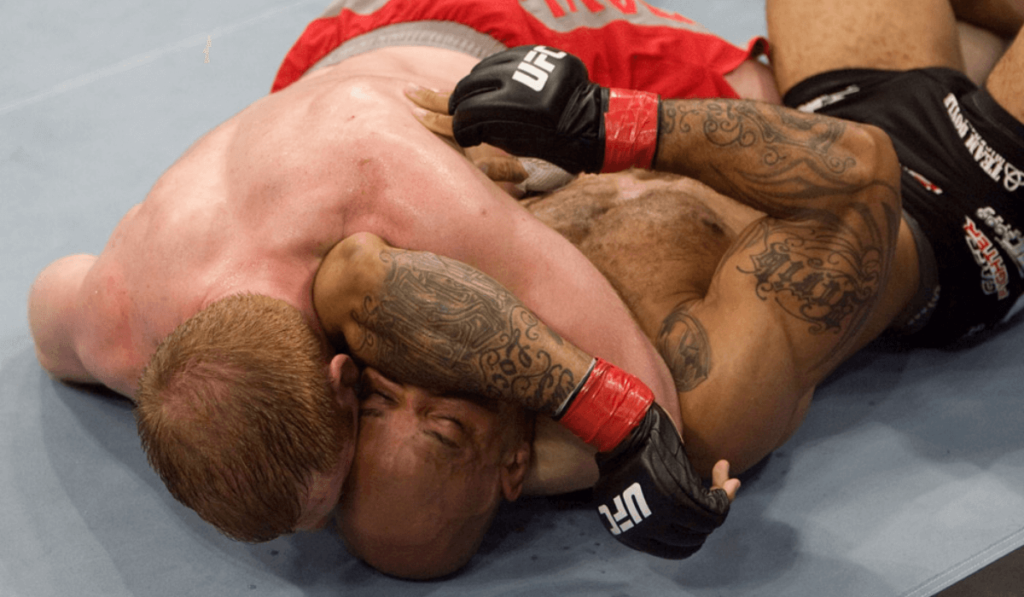
The arm triangle choke is another fantastic and successful submission in Brazilian jiu-jitsu and mixed martial arts (MMA). It’s an excellent move for beating even the toughest grapplers.
Consequently, to develop a challenging attacking game, it would be best to start learning the arm triangle submission from the first day you step foot on the mat.
Armbar
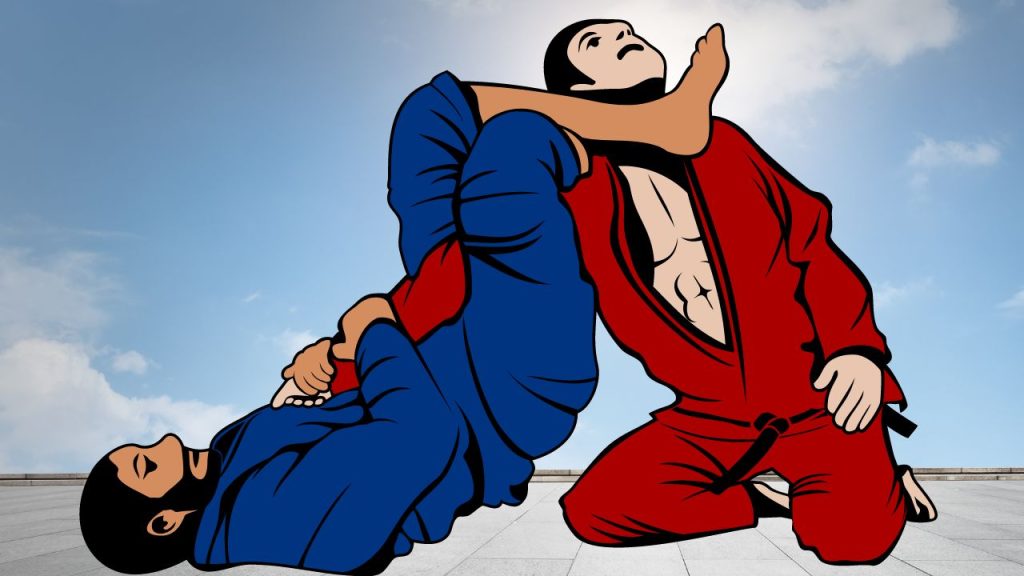
The armbar is among the most compelling submissions in grappling martial arts, such as BJJ and MMA. As a result, it can outperform even the most formidable opponents in challenging competitions.
In addition, regardless of your grappling experience or knowledge (beginner or advanced competitor), the armbar is a submission anyone can learn.
A jiu-jitsu practitioner can get an armbar submission when isolating and controlling one opponent’s arm between his legs.
Then, using your full-body leverage, drive your hips up and your opponent’s wrist down to extend his elbow, forcing him to submit.
Omoplata
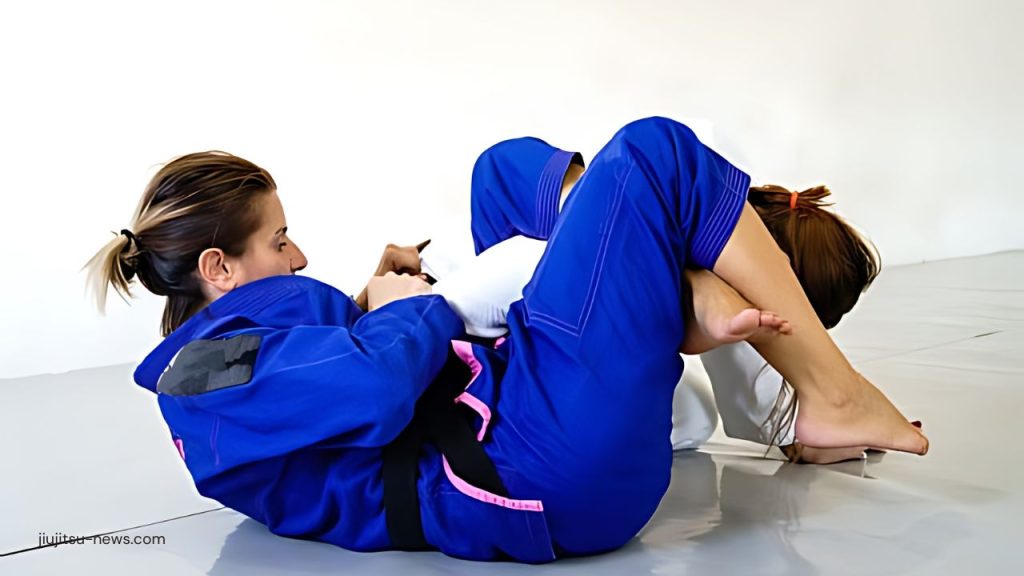
The omoplata has the potential to be one of the most versatile submissions in grappling martial arts, especially in gi jiu-jitsu.
It is a shoulder lock where the attacker uses his legs and hip to extend the opponent’s shoulder.
In addition, you may finish an opponent with an omoplata submission from various positions, such as the closed guard, side control, back control, etc.
Wrist Lock
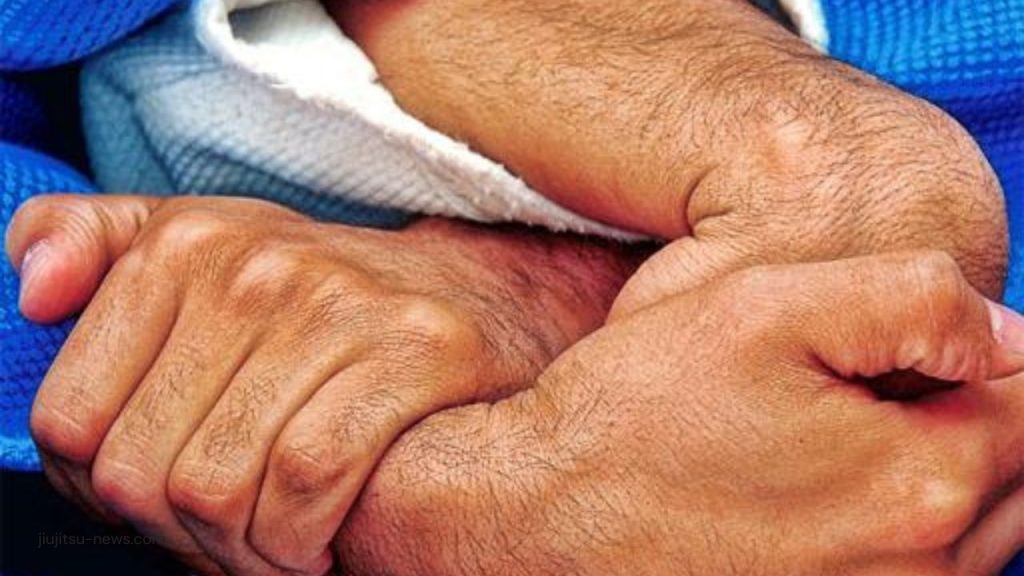
The wristlock may have originated from diverse martial arts such as Aikido, Hapkido, and Aiki-Jitsu. It is regarded as one of the most sneaky and straightforward grappling submissions.
A successful wrist lock technique isolates the opponent’s wrist from any suitable position (there are plenty).
Then, when applying the submission, you put massive pressure on this little joint of the opponent’s arm, compelling him to give up and tap out.
Kimura Lock
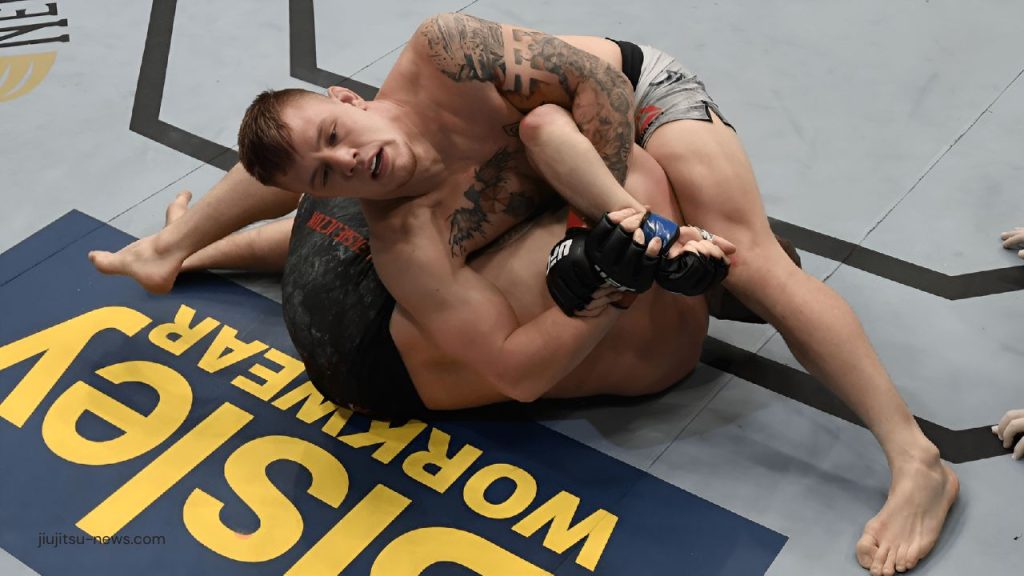
The Kimura lock is one of the best submission techniques used effectively in Brazilian jiu-jitsu tournaments and MMA fights.
You should first isolate the opponent’s elbow with a good hold to do a Kimura.
This may be done from various positions, including standing, side mount, half guard, closed guard, and open guard.
Guillotine Choke
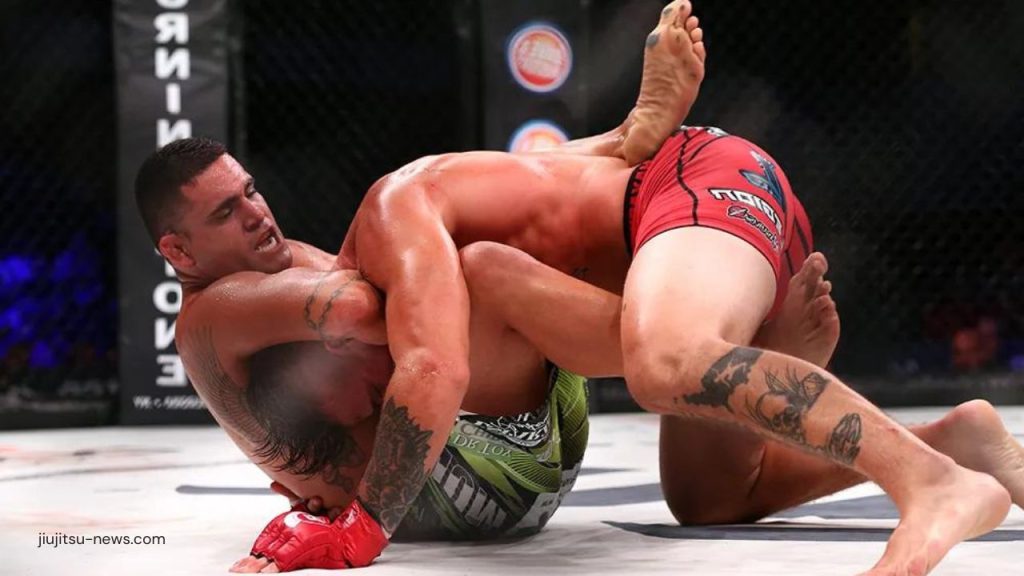
The guillotine choke is one of the most reliable and successful attacks for rapidly tapping out an opponent in BJJ, mixed martial arts (MMA), etc.
It can be performed from several grappling positions, including the closed guard and standing.
Bow and Arrow Choke
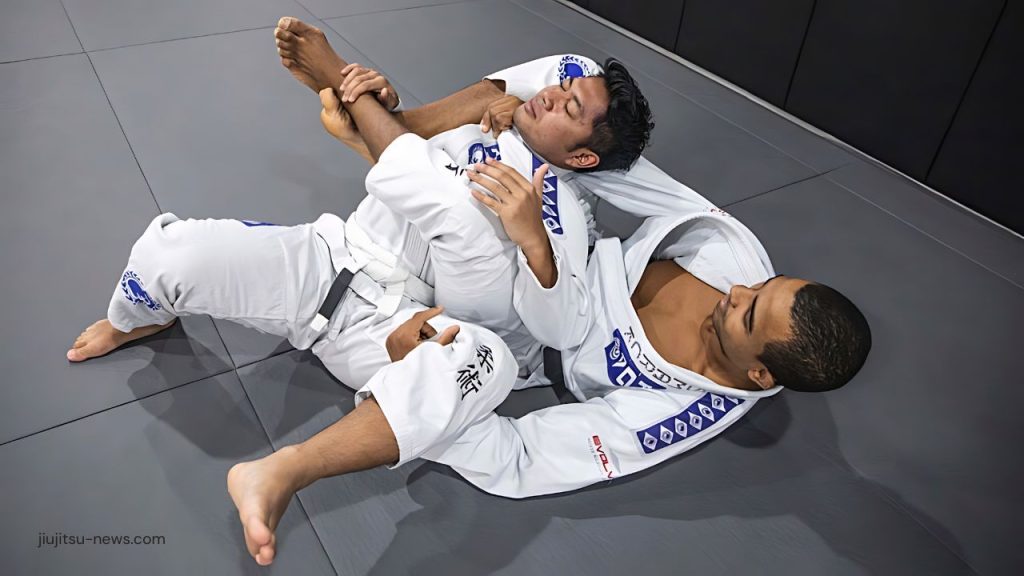
The bow-and-arrow choke is one of the most successful submissions. You will use many of these choke attacks once you reach the upper ranks (brown and black belts).
In addition, the bow-and-arrow choke is one of the most effective submission techniques in BJJ gi tournaments.
Rear Naked Choke
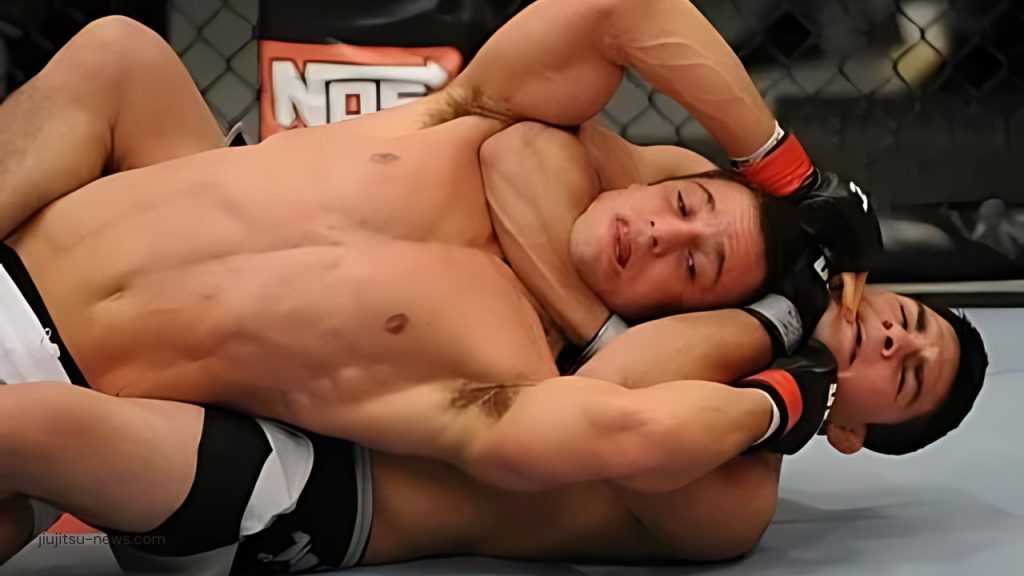
The Rear Naked Choke (RNC) is the most dangerous submission in No-Gi Grappling. It’s a brutal, dominating attack mainly performed from the back position.
Follow the instructions below to perform a proper rear naked choke from the back position:
- Take your opponent’s back. And then, install the seat belt and hook your opponent to control his back.
- Dominant hand fighting and insert one of your arms around your opponent’s neck.
- Using your free arm, reach the rear of the opponent’s head far enough down so that he can’t escape.
- Push and squeeze the top forward and down with your locked arms to produce the necessary pressure on your opponent’s neck, leading him to submit.
Ezekiel Choke
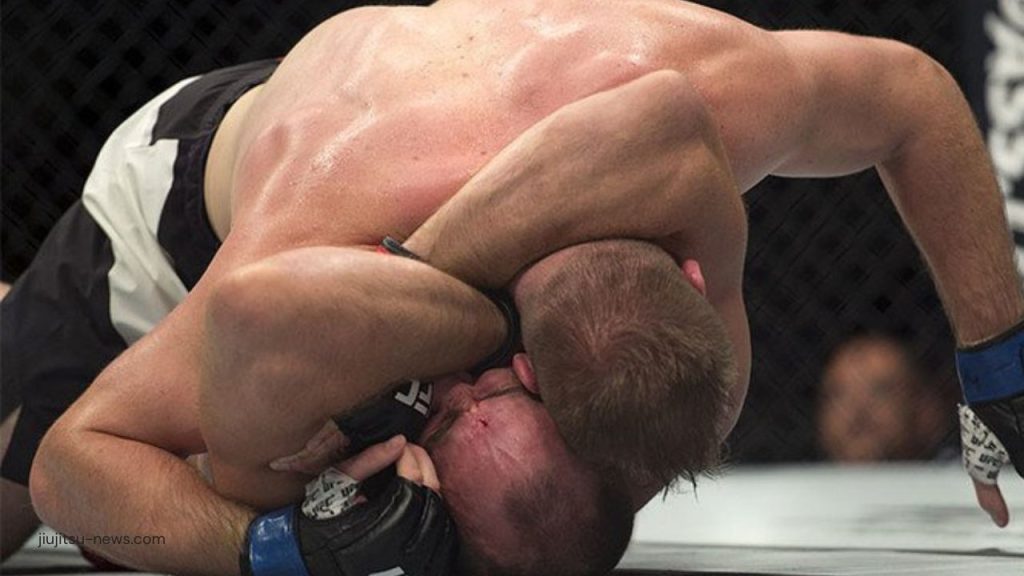
The Ezekiel choke is a brutal yet effective submission technique in Brazilian jiu-jitsu, which can be used in both Gi and No Gi forms.
This move involves using a combination of sleeve and wrist to create a scissoring motion that blocks the opponent’s trachea. The Ezekiel choke can also be used as a blood choke.
Clock Choke
The clock choke is one of the sneaky Gi choke submissions. It is an attack applied when your opponent is on his knees in turtle position, and you’re above him.
Otherwise, it can be applied from the side control, the mount, and the guard.
Cross Collar Choke
The cross collar choke is one of the best submissions in gi competitions. It is an effective blood choke that applies pressure to both sides of the person’s neck’s carotid arteries, forcing him to give up or not; it can put him to sleep.
Since it is easy to learn and master, the cross-collar choke is typically one of the first that white belts should know.
Baseball Bat Choke
The baseball bat choke is one of the most effective submission moves in GI training.
You can execute this choke variant from various positions, such as the guard, side control, knee ride, etc.
North-South Choke
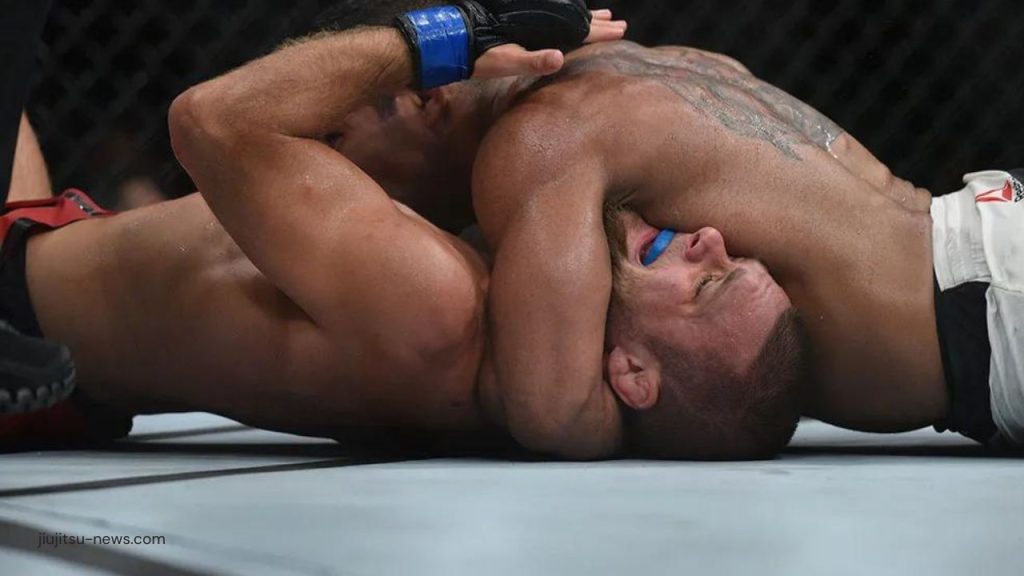
The north-south choke is a superior submission in Brazilian jiu-jitsu and mixed martial arts. It is one of the most effective BJJ attacks, ranking alongside the guillotine choke, triangle choke, etc.
In addition, the north-south position gives you more options for defeating your opponent, such as arm-locks, chokes, etc.
As a result, as a clever fighter, you should learn to complete this move correctly from your first days on the mat.
Loop Choke
The loop choke is one of the top jiu-jitsu submissions, and you should learn it as soon as you start training. It is one of the most basic and valuable chokes in grappling.
Otherwise, this choke variation can be obtained from various positions, including the guard, side control, etc.
Heel Hook
The heel hook is one of the best advanced no-gi submissions you should learn and master.
It’s a high-level submission grappling that can be effectively used in ADCC and no-gi tournaments, but it’s banned in gi competitions.
Here are the necessary steps to perform the heel hook submission:
- First, enter a suitable heel hook position from a butterfly guard, half guard, etc. Then, control the opponent’s knee/hip joints.
- Apply a force transversely that conducts to twist the heel either medially or laterally.
The heel hook submission applies a torque force on the ankle, forcing the opponent to submit.
Therefore, This ankle lock technique may cause injury and damage to multiple joints and ligaments.
Conclusion

Mastering Brazilian Jiu-Jitsu submissions is advantageous and imperative for success in the world of grappling.
The art of submission can turn the tide of any match, providing instant triumph and a deep sense of satisfaction.
Throughout this article, we explored many submission techniques, each with nuances and applications.
These techniques form the backbone of any grappler’s arsenal, from the classic Triangle Choke to the formidable Rear Naked Choke and from the versatile Armbar to the sneaky Wrist Lock.
Related: Prove your mastery of Brazilian Jiu-Jitsu with our Ultimate Quiz! Test your knowledge of techniques, famous fighters, and more. Start the challenge now!



